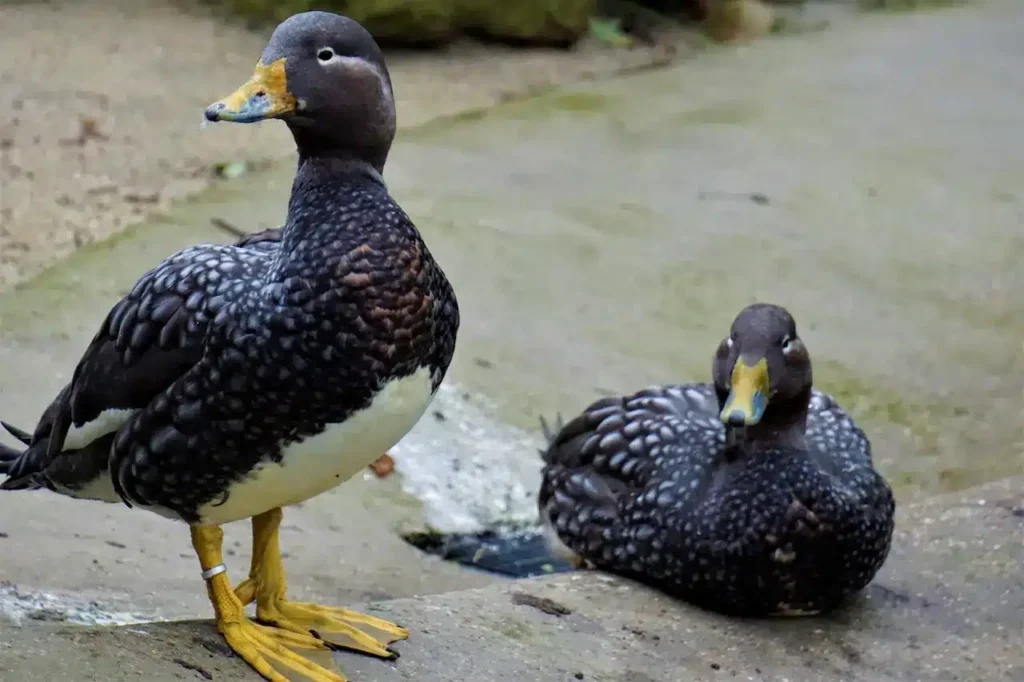Flying Steamer Duck

Scientific Name
Tachyeres patachonicus
Alternative Names
Flying steamer-duck, flying steamerduck
Measurements
| Measurement | Male | Female |
|---|---|---|
| Weight | Heavier | Lighter |
| Wingspan | Slightly smaller | Slightly larger |
| Bill | Dark grey with yellow tone | Orange with black tip |
Status / Origin
Native to southern Chile, Argentina, Tierra del Fuego, and the Falkland Islands. Classified as Least Concern.
Identification
Smallest of the four steamer ducks. Has brown head and neck with a white stripe from the eye to the nape. Body is brown-grey with a white underbelly and orange feet. Males are heavier but have slightly shorter wings and smaller skulls than females. Both sexes have orange, hardened wing knobs used for display and combat.
Voice
Low, grunt-like calls. Females make rapid, low-pitched grunts of similar tone. Males produce three whistle-like grunts: rasping, ticking, and sibilant.
Diet
Forages mostly in pairs. Dives in shallow zones or around deep-water kelp. Eats mollusks, crustaceans, and other marine invertebrates.
Distribution
Found across Chile, Argentina, Tierra del Fuego, and the Falkland Islands. More widespread than other steamer ducks due to its ability to fly.
Habitat
Freshwater lakes, slow-moving rivers, coastal bays, estuaries, and kelp-lined shorelines.
Breeding
Thought to be mostly monogamous. Courtship starts with both birds dipping their bills into the water rhythmically. The female submerges, the male mounts, and afterward both raise their bills high and grunt loudly.
Wintering
Does not migrate long distances. Remains within its home range throughout the year.
Threats
Nests are preyed on by Chimango Caracaras, Crested Caracaras, Fuegian Culpeo Foxes, and introduced American mink. Highly territorial and aggressive, sometimes killing other waterbirds such as grebes and shovelers.
Conservation
Listed as Least Concern. However, increased predation by American mink on nests of flightless steamer ducks in Tierra del Fuego may threaten populations in the future.
